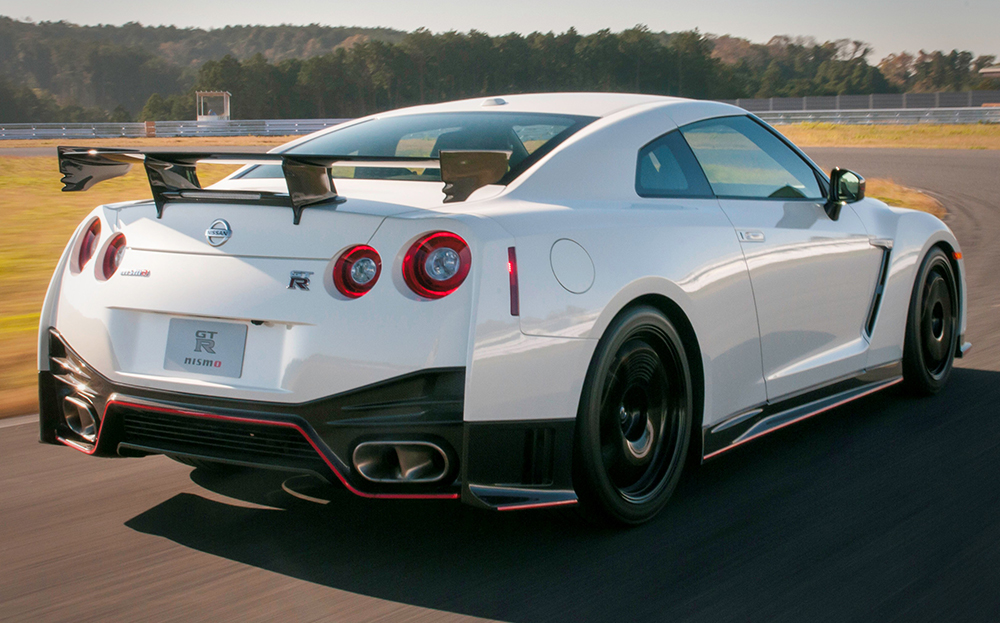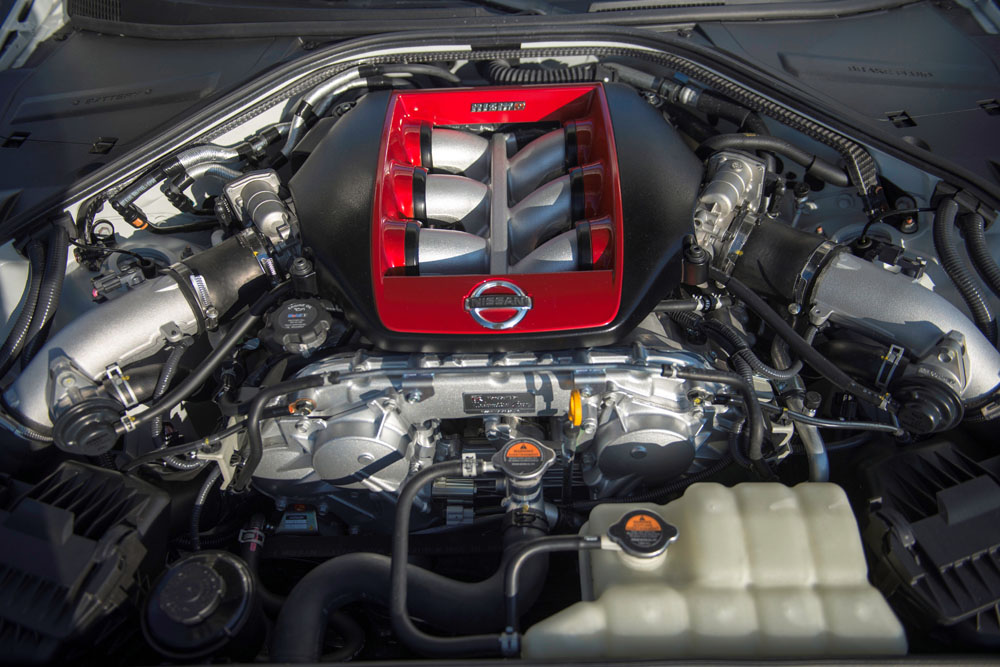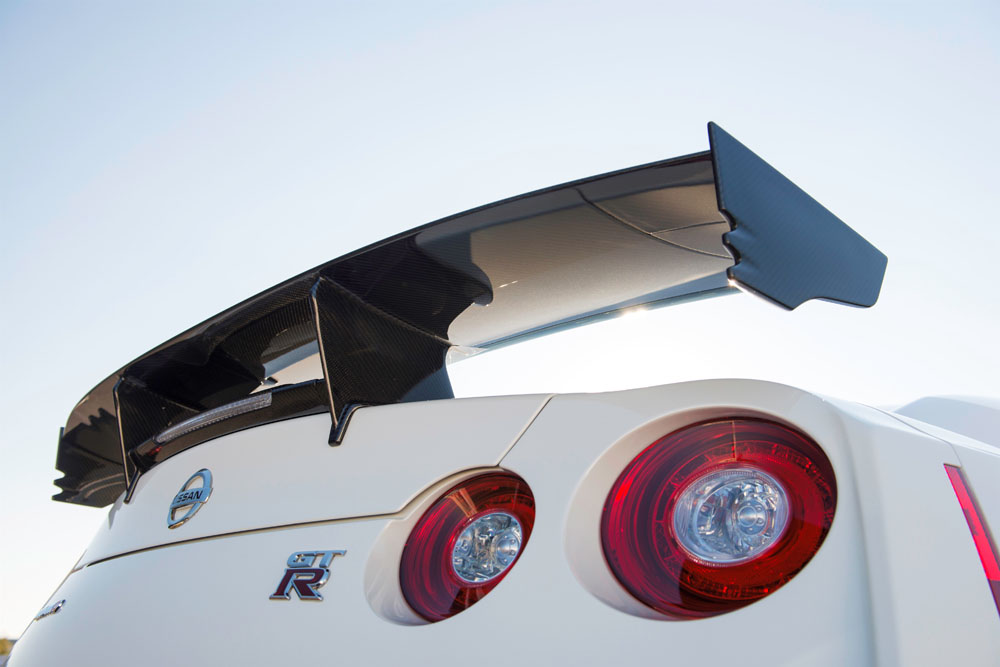Testing the Nissan GT-R Nismo’s record run at the Nürburgring
If only it hadn’t been raining...

THE CHALLENGE was simple: find out whether the new Nissan GT-R Nismo is the world’s fastest sports car. Nissan thinks it is. Last November, the company dispatched a professional racing driver and one new Nissan GT-R Nismo to the Nürburgring, the longest, most demanding race track in the world. Seven minutes and eight seconds later, the GT-R Nismo had completed a lap of the 12.9-mile circuit.
If you’ve never been to the German racing circuit, it’s hard to imagine just how impressive such a lap time is. Put it this way: it’s a little like belting out a lap of the M25 in 30 minutes.
Search for and buy a Nissan GT-R on driving.co.uk
How do we know that Nissan wasn’t pulling a fast one, though? That the clock wasn’t stopped a little prematurely on that flying lap? The numbers massaged just enough to get the attention of car enthusiasts the world over?
We don’t so, dear reader, I bravely stepped into a set of Nismo racing overalls, and donned my crash helmet. The Nismo and the Nürburgring awaited…

Nismo is the part of Nissan that deals in excitement. Since the GT-R Nismo recorded its record run, only Porsche’s 918 Spyder has gone quicker (terms and conditions apply). But that’s a two-seat hypercar with two power sources (a V8 petrol engine and an electric motor) and a hyper-inflated price of over £700,000. By comparison, the GT-R Nismo is, with its 3.8-litre twin-turbocharged V6 petrol engine producing 583bhp, thoroughly conventional. It even has comfy back seats with Isofix child-seat mounts. And it costs “just” £125,000.
Before you choke on your Cornflakes and ask whether Nissan, the master of sensible and affordable cars such as the Micra and Qashqai, has taken leave of its senses, bear in mind that the competition charges a similar amount for its sporting hardware. Audi’s R8 V10 Plus is £129,735, the Porsche 911 GT3 costs £100,540 and a Ferrari 458 Speciale demands £206,945.
The car hasn’t been styled; it has been designed by a super-computer and a wind tunnel to make sure it sucks itself hard to the road
During the driver briefing, we were warned about “suboptimal lines” and a patchwork of road surfaces: some parts laid 50 years ago, and other bits as fresh as a few months old. This didn’t ring too many alarm bells; what did was a series of videos of drivers being stretchered away from accidents.
Approaching the Nismo does nothing to put your mind at rest. If the standard GT-R looks like a bouncer, the Nismo version looks a very angry one. The car hasn’t been styled; it has been designed by a super-computer and a wind tunnel to make sure it sucks itself hard to the road. There is carbon fibre wherever you look. Get down on your hands and knees and the underside of the GT-R Nismo is cloaked in a flat floor, made of carbon, and designed to smooth the flow of air, just like a racing car.

Then there’s the new rear wing. It’s larger than an ironing board but, being fashioned from carbon fibre, considerably lighter. It generates nearly 100kg of additional downforce.
All this would be terrific for driving around the Nürburgring as if your trousers are on fire, but for one minor problem: it’s raining. Pouring, actually.
Unfortunately, it’s now or never. So off we go, barrelling down into the Foxhole and on toward daunting bends such as Lauda Linksknick, where Nicki Lauda nearly met an untimely end, and the appropriately named Eiskurve, or ice curve, which is wickedly slippery come rain or shine.
Compared with the latest, standard GT-R we’d driven earlier in dry conditions, the Nismo model seems to breathe more deeply and accelerates harder. There is so much power that at the exit of every bend all the tyres spin if the throttle is squeezed to the floor. Even four-wheel drive and stability control systems can’t contain the brute force of the Nismo.
It’s a relief to find the car feels that much more tactile than the standard model. The driver is fed more information through their fingertips and the seat of their pants, so it’s possible to drive the Nismo right to the limit of adhesion, without overstepping the mark and becoming another casualty of the track’s blind crests and tightening turns.

The adjustable Bilstein dampers offer three settings: Comfort, Sport and Race. It’s comfort for us today. The reinforced wheel hubs aren’t being taxed to the extent they would be were the track dry and the unique Dunlop tyres hot and sticky.
There’s a little delay between you flooring the throttle and the two large turbos waking up, but with a bit of practice you learn to adapt your driving to suit. The engine is surprisingly smooth and quiet; nothing like a Porsche 911 GT3 or Ferrari 458 Scuderia. Some will feel it’s less thrilling for it; others will welcome the calm when the time comes to leave the racetrack and begin the drive home.
The engine is surprisingly smooth and quiet; some will feel it’s less thrilling for it, others will welcome the calm when the time comes to leave the racetrack and begin the drive home
The interior has never been much of a feature of the GT-R; practical, yes, but stylish, no. It looks like the control room of Battersea power station. The new Recaro seats are lighter (part of the structure is, you guessed it, carbon fibre) and offer much better support to the upper body. A slightly thinner steering wheel is wrapped in Alcantara trim, and there’s a boot that will hold a lot more than a Hermes handbag. But all of this is of little significance compared with the driving experience.
Just 200 GT-R Nismos will be built. It’s as exclusive as any specialist Porsche or Ferrari, then. But the search for conclusive proof that Nismo has created the fastest sports car in the world is thwarted by the one thing even its engineers can’t control: the weather. Driving will have to conduct a test of its own when the sunshine returns.
Search for and buy a Nissan GT-R on driving.co.uk




